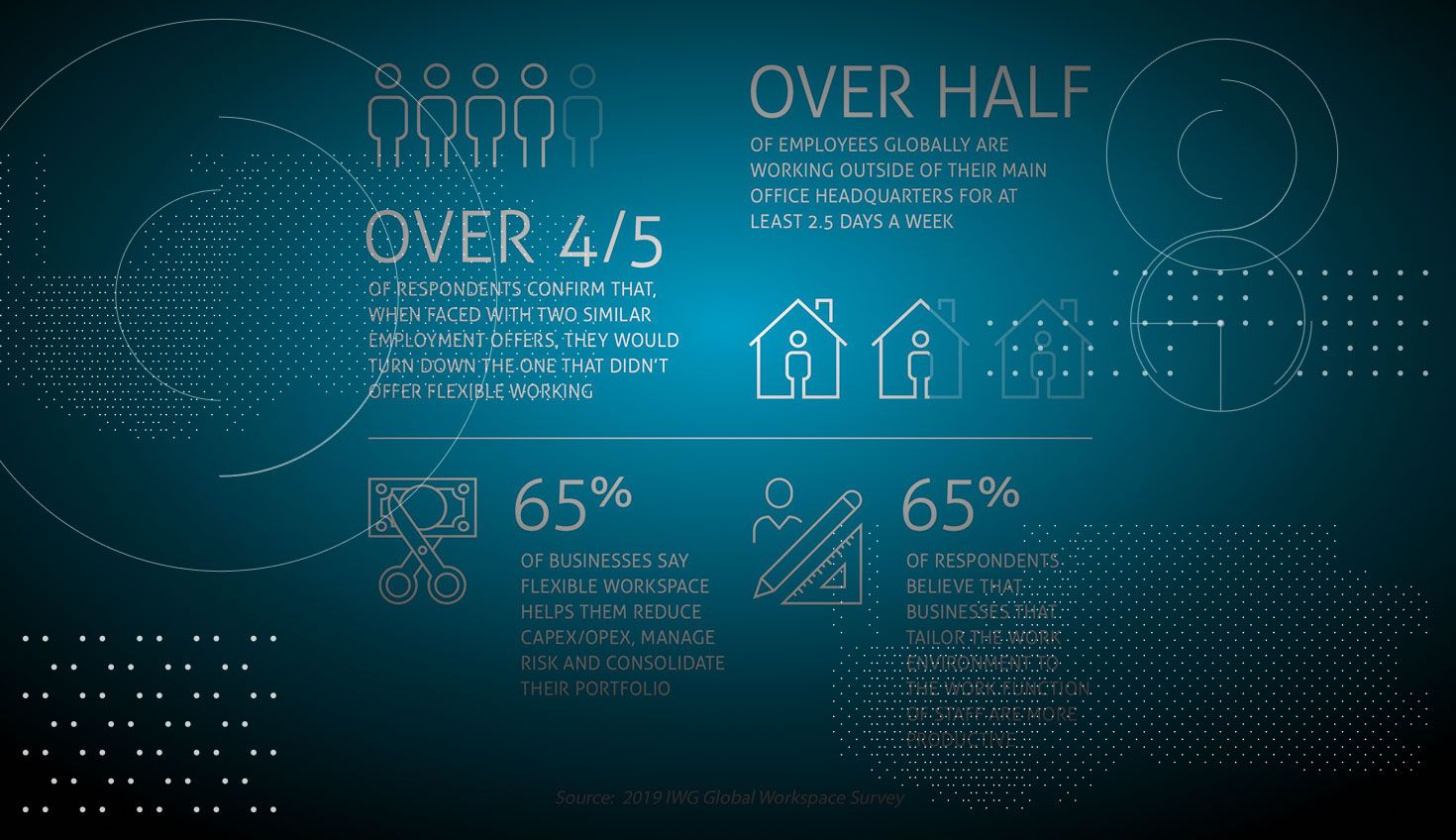
07:58
Millions of people worldwide are unexpectedly working from home this month due to the COVID-19 situation. As the BBC notes, this is a mass-scale “experiment” for many of us accustomed to a traditional office setting. The tech industry news site VentureBeat is speculating that this temporary shift “could lead to a permanent remote workforce.”
Recent current events aside, the business world has already been gravitating toward a hybrid mix of remote and traditional work environments. According to the 2019 IWG Global Workspace Survey, which asked 15,000 business professionals across 80 countries about their company policies, an astounding 85 percent of respondents agreed that offering flexible workspace and hours resulted in better employee productivity.
In the study, which branded today’s workers across all demographics “Generation Flex,” business leaders acknowledged that flexible workspace and hours were a critical recruitment tool. Eighty percent of respondents said that given two comparable job offers, they would turn down the job with more rigid workspace constraints.
The study defines a “flexible working” policy as involving one of the following options:
- Being able to choose which location (city, type of office, etc.) I work from at least some of the time.
- Being able to make some decisions regarding my working hours.
- Being able to choose where I work from at least some of the time.
- Being able to manage my workload independently.
Interestingly enough, there is a wide range of adoption of flexible workspace policies in different countries, with Germany and the Netherlands being more open to the idea, and China and Japan being less so. Take a look at the chart below:

(Source: IWG Global Workspace Survey)
How Can Product Development Teams Work Remotely?
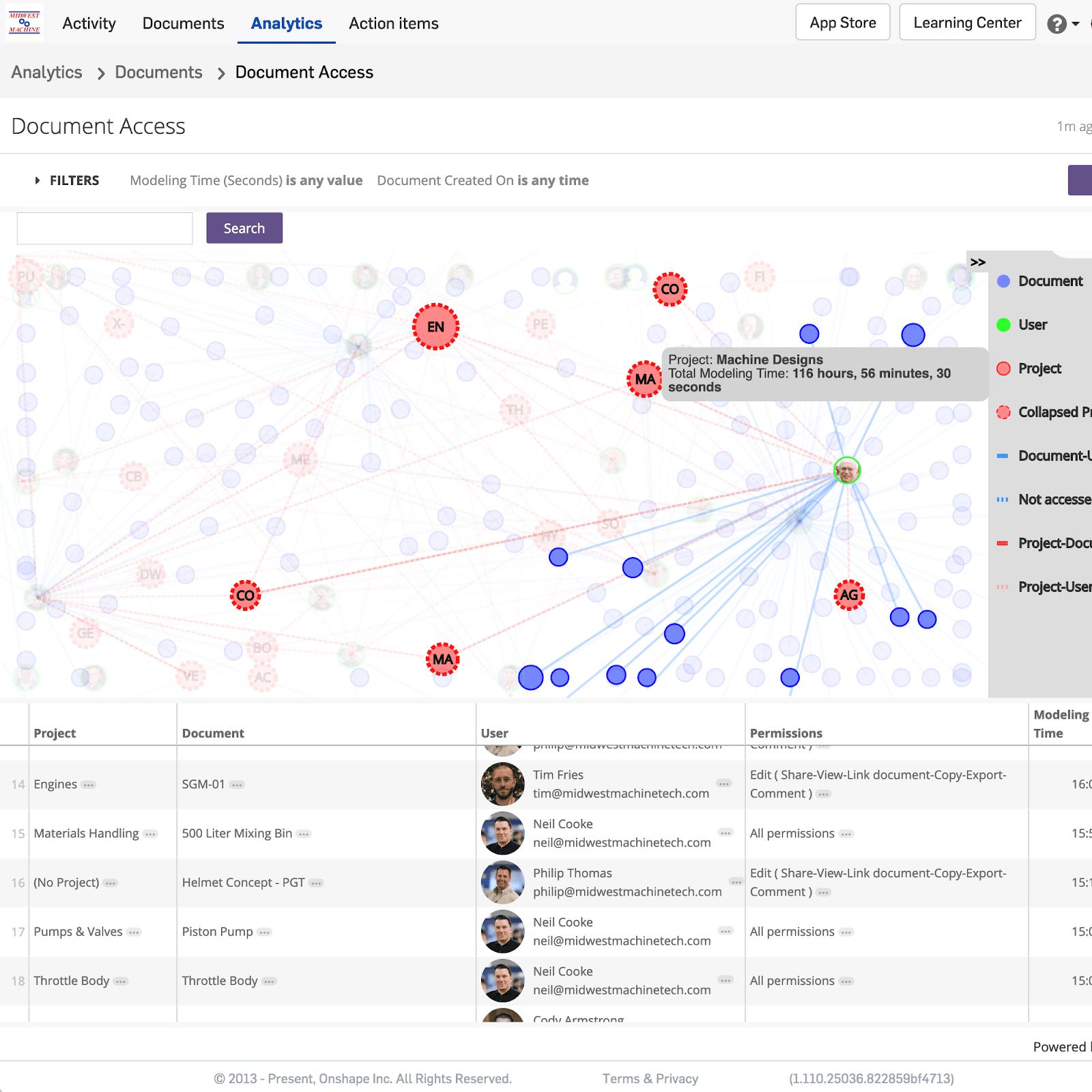
With Onshape’s Enterprise dashboards, executives and project managers can easily get up-to-the-minute information on the status of multiple projects – including where team members are located and when contributors make design changes
For decades, working remotely for most product development professionals has been an impossibility. Using file-based design tools meant being tethered to one high-end workstation powerful enough to run CAD software (and also licensed to do it). Licensing a high-performance laptop may have allowed an engineer the mobility to work from home, but he or she were still working on an island – unable to easily collaborate with co-workers like they would do if they were in the same office.
When using file-based design software, collaboration is a clunky exercise – something MacGyver might accomplish with a stick of gum and a bunch of paper clips. The old way that product development teams would collaborate on a design would be to email files or screenshots back and forth, perhaps discussing them on the phone or through videoconferencing.
This approach not only extended the project’s downtime, but it also sometimes resulted in version control headaches. Is this version of the design really the latest up-to-date version? Did I name the “real” final version “Project X-final” or “Project X-final-final”? Adding complex and costly Product Data Management (PDM) systems can address version control issues, but they also create a new set of problems. Strict workflow requirements to check-in and check-out files from a central vault force engineers to design serially – frustratingly making them wait for colleagues to finish their work before they can even start theirs.
Then along came the cloud revolution, which introduced internet-based business productivity tools – such as Salesforce, Basecamp, Slack, Google Docs, Microsoft Office 365, etc. – that provided a single source of truth and vastly improved the way teams collaborate. In the design and manufacturing world, that torch is now being carried by Onshape, the SaaS product development platform that instantly changed how engineers communicate and work together.
With Onshape, instead of sending files back and forth through email or Dropbox, product development teams spread across multiple locations could now work simultaneously on the same CAD model online – seeing each other’s changes in real time. Additional commenting functionality allowed teams to engage in live chats about any aspect of the design. Instead of using static screenshots as the basis of conversation, team members could rotate or zoom in on the specific part of the 3D model in question as their peers looked on.
In short, collaborating in Onshape offers the same advantages as working together in close proximity, as leaning over a colleague’s shoulder and pointing to the model on the screen. Using “Follow Mode” allows you to follow a collaborating team member’s work as it happens. Followers see the collaborator’s cursor movements, and every action inside their active tab, with the same model orientation and position. (You can see a video of Follow Mode here .)
Executives and project managers who want to know the status of a project no longer have to wait for formal design review meetings. Onshape’s comprehensive Edit History tracks every design change and who made them, enabling quick comparisons with prior versions or alternative ideas. It’s all built-in. There are no meetings to set up or employee schedules to coordinate.
My colleague, engineer Bradley Sauln, recently recapped his top Onshape tips for engineers to work from anywhere . If anyone on your product development team is working remotely – or you frequently need to share your CAD models with partners or vendors – I highly recommend reviewing Brad’s tips.
The Benefits of Onshape’s Real-Time Collaboration Tools
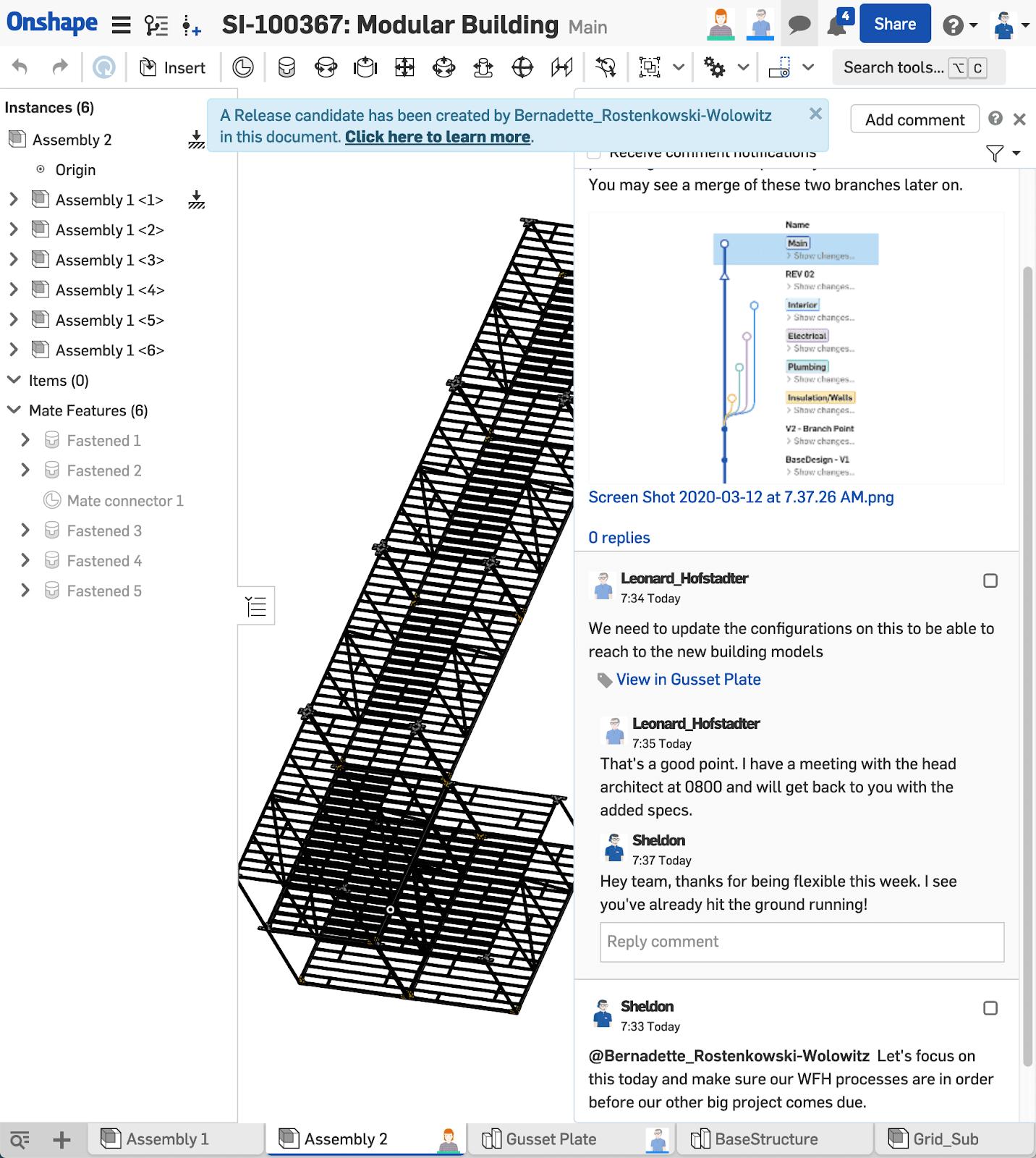
Onshape’s Comments feature enables real-time chats about product designs, eliminating the downtime of emailing CAD screenshots back and forth, and waiting for formal design review meetings.
Onshape’s cloud-native SaaS platform was created to enable today’s flexible product development teams to work from anywhere.
Based in Norway, Focus Engineering has 40 engineers working on 10 to 20 worldwide oil and gas design projects at any given time. The company designs modules and systems for the energy industry, optimizing structures for strength, durability and weight.
“We view Onshape not only as a platform to improve our design process, but also as an investment for improving how we will work 5 to 10 years from now,” says Focus Engineering CEO Tore Bjørkås. “Having the ability for our engineering teams in Norway and China to work uninterrupted from anywhere – at home, the office or from a site – is a huge competitive advantage for us.”
“In addition, we also invite our clients and fabrication suppliers directly into our Onshape models, showing that when we talk about transparency, we mean transparency,” he adds. “Having our product development tools in the cloud has better prepared us to handle unexpected business challenges in real time. Onshape gives us additional confidence that our teams can adapt to and thrive in almost any situation.”
As Bjørkås notes, running a successful business – no matter the size – involves being able to adapt to unpredictable conditions and circumstances. That’s always the reality, but the current economic chaos surrounding the COVID-19 situation has infinitely magnified normal day-to-day challenges for every company.
One of Onshape’s multinational Enterprise customers, a tier-1 supplier to the automobile industry, was recently caught off guard while their design team in China was on break for the Chinese New Year. The coronavirus outbreak coincided with the holiday and employees were not allowed to return to their offices when vacation was over.
The company is now transitioning much of its global workforce to cloud-native Onshape. Many of their locked-out engineers were still relying on a file-based design platform they had been using for years, but they no longer could access their work from home. Fortunately, those same employees were able to access Onshape from their home computers and continue to do design work.
For a comparison, here is a map of where the company’s CAD users were working in November 2019, when the engineers were mostly based at their offices in China. Each dot represents a city with multiple users.
You can see design activity in only a handful of locations:
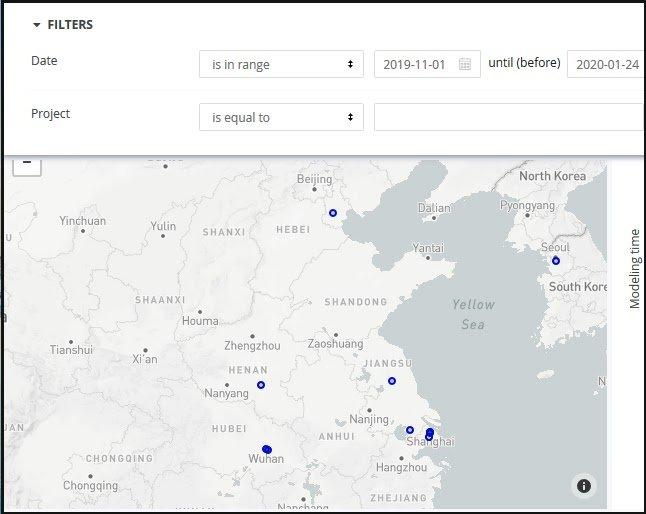
And here is a map of where team members were designing after the outbreak in late January through March 2020. The significant increase in the number of cities reflects the number of engineers now working from home:
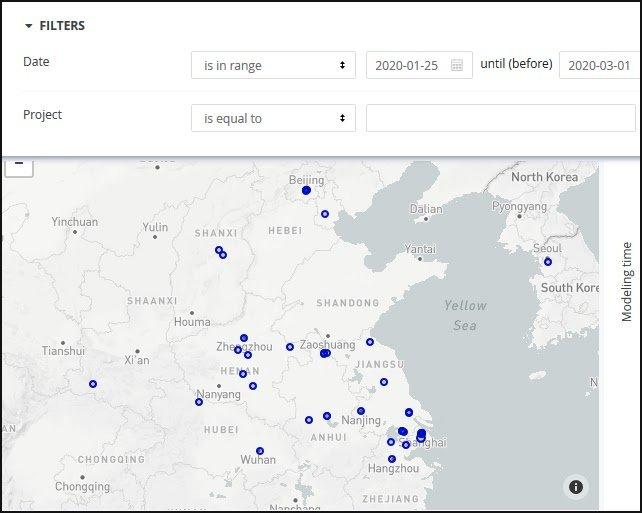
Our customer shared these before-and-after maps with us to demonstrate their appreciation of Onshape’s work-from-anywhere capabilities. To be clear, we both believe that protecting everyone’s health is far more important than the level of employee productivity. Companies should be prioritizing the safety of their workers above everything else.
What stands out to me is that some companies now no longer have to choose between safeguarding their employees’ health and continuing business operations. With strategic planning, companies that do their product development work in the cloud can focus on both things (given the first thing has been taken care of).
But it’s worth stressing again that the growing worldwide demand to work remotely was not caused by any crisis. It’s an inevitable shift that has already been happening. Employees who are given opportunities to achieve a better work-life balance, who are trusted to work flexible schedules and from flexible locations, are happier employees. All they need now are the right tools to let them thrive anywhere.
Latest Content

- Case Study
- Consumer Products
BOA Technology: Redefining Outdoor Fit Equipment with Cloud-Native Onshape
11.03.2025 learn more
- Blog
- Becoming an Expert
- Assemblies
- Simulation
Mastering Kinematics: A Deeper Dive into Onshape Assemblies, Mates, and Simulation
12.11.2025 learn more
- Blog
- Evaluating Onshape
- Learning Center
AI in CAD: How Onshape Makes Intelligence Part of Your Daily Workflow
12.10.2025 learn more
- Blog
- Evaluating Onshape
- Assemblies
- Drawings
- Features
- Parts
- Sketches
- Branching & Merging
- Release Management
- Documents
- Collaboration
Onshape Explained: 17 Features That Define Cloud-Native CAD
12.05.2025 learn more



